
9 minute read
GLOWING WITH COLOUR A sixteenthcentury Suffolk home filled with vibrant hues and playful patterns



Glowing WITH COLOUR
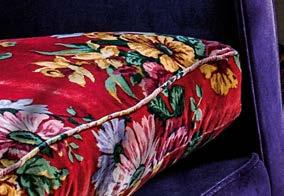


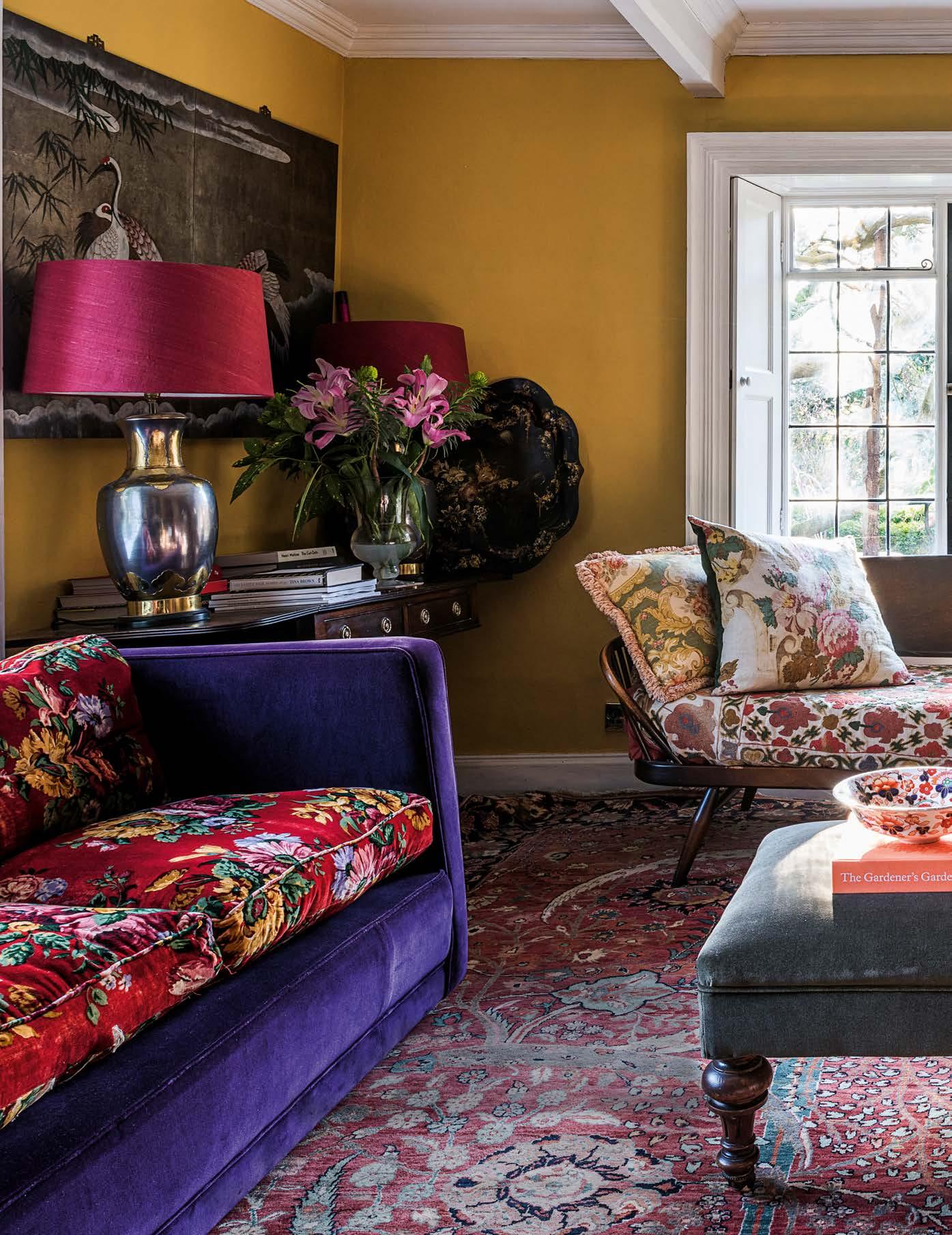
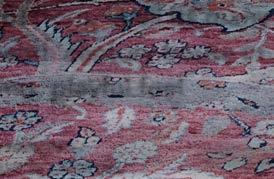
A vibrant mix of colour and pattern, in all its many forms, has infused this sixteenth century house in Suffolk with an uplifting, playful feel
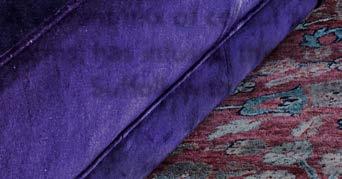
FEATURE AMANDA HARLING PHOTOGRAPHY ANDREAS VON EINSIEDEL

Antiques such as the round side table and the mahogany tall boy, known as Grandpa Goodman because it was made as a wedding present for a Goodman relative and passed down the generations to John, are mixed with contemporary pieces giving the sitting room a pleasantly informal look.
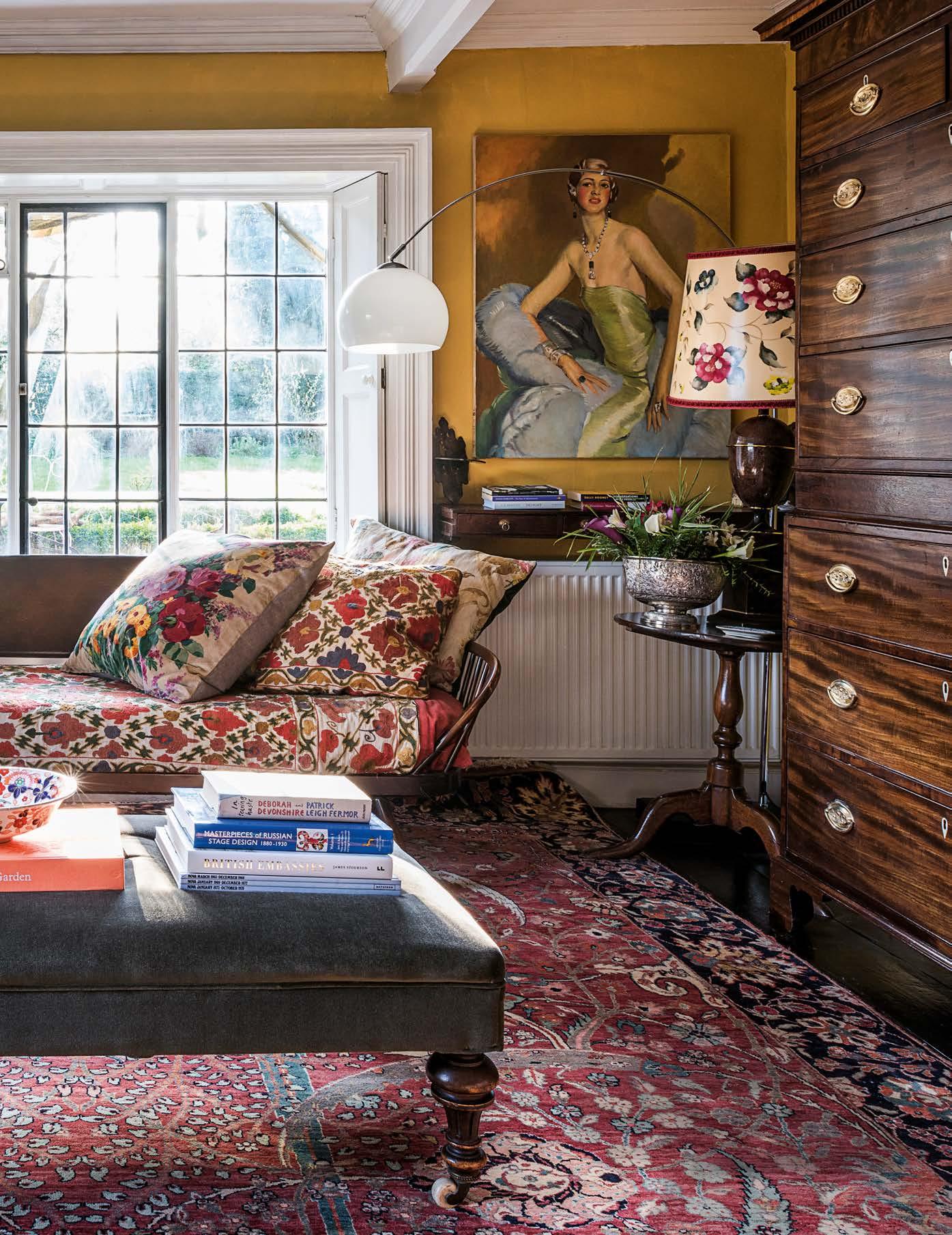

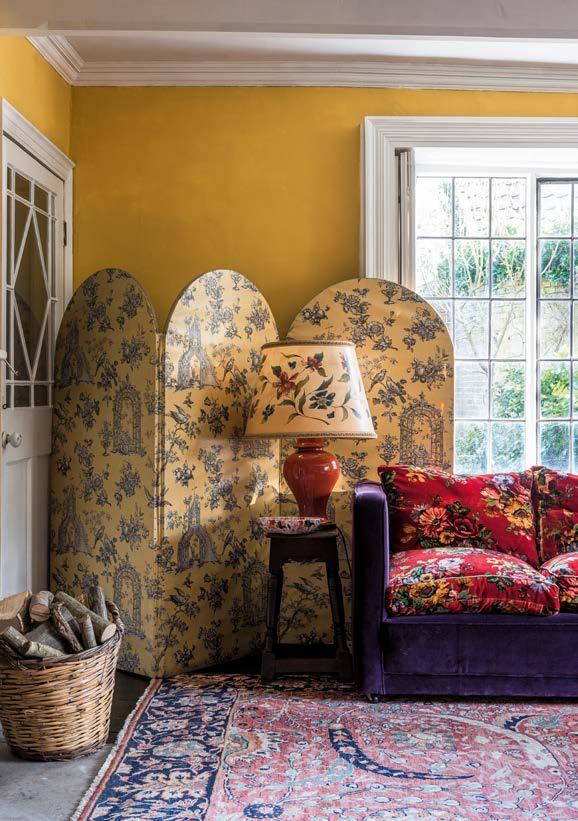
ABOVE The Georgian fire surround and the Delft tiles so often found in period Suffolk houses are original. Little Greene’s Yellow Pink on the wall matches the yellow silk trim on the framed pair of Chinese armbands hanging on either side of the fireplace. LEFT The sitting room is vibrant with colour and pattern. The toile de Jouy screen was sourced from specialist dealer Su Mason, whilst the sofa, bought in the 1970s, is covered in purple velvet from The Conran Shop and cushions made by Lynn from 1930s velvet curtains. L ynn Walford is recalling how she and her husband John swapped life in busy Hackney, east London for the picturesque East Anglian village where they have lived for the past 10 years. “It was only a matter of time before we moved to Suffolk,” she says. “Although John was born and brought up in Kenya, his family had owned a home in Walberswick since 1905, where he loved to spend holidays. This part of the world had long been familiar to him, and to me too, from the days when we met as students at Birmingham University.”
The couple both studied drama, John going on to stage fashion shows and events for designers, and Lynn a stylist and fashion editor. “Because of work, we lived in London, but the more congested it became, the more we yearned for a quieter environment with cleaner air,” Lynn says. “So, after our daughter had completed her studies and left home, we set about looking for a place in the country. John still teaches in London a couple of days a week, so being within reach of a station was important, but apart from that we were pretty flexible about where we lived.” The village house the couple eventually bought has undergone many changes since it was built in the latter
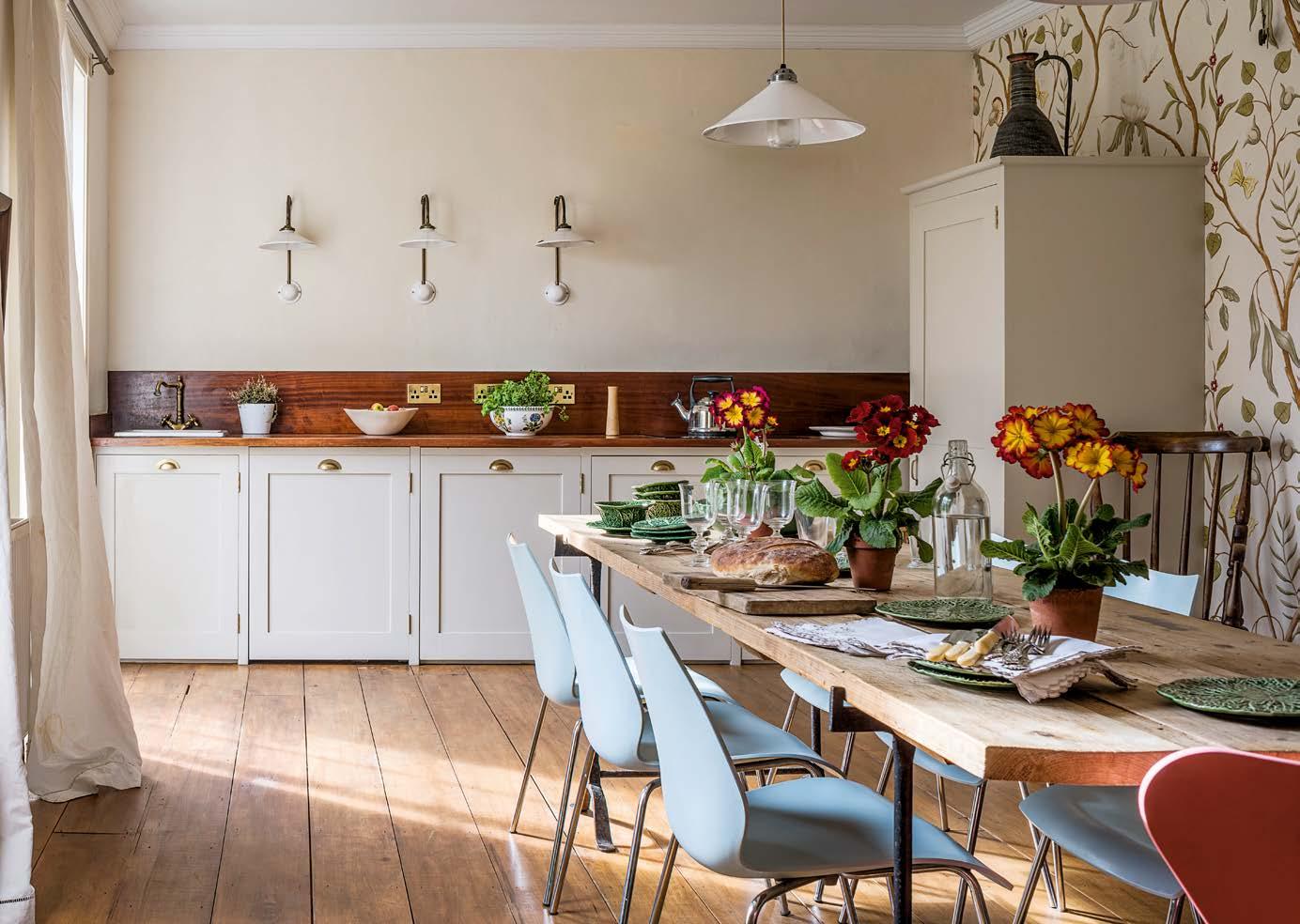
part of the sixteenth century. The core dates from 1590 and originally consisted of two or three terraced cottages but was later altered to become one property. At the end of the eighteenth century, it was gentrified with the addition of the Georgian facade and the attic floor which provided accommodation for servants.
The alterations the couple have made since moving in have been mainly decorative. “The first thing we did was change the traditional ‘Suffolk Pink’ of the facade to Farrow & Ball’s Wimborne White to freshen up the exterior,” Lynn says. “According to research, ‘Suffolk Pink’ was first used in the fourteenth century by the dyers of Suffolk, who added natural materials to limewash, such as elderberries, or blood from pigs or oxen. Blackthorn or sloe juice were other less grizzly ways of tinting the paint.” Lynn and John also converted what had been a music room, built by previous owners in the 1960s, into a dining room and kitchen that they use in the

ABOVE Adam’s Eden wallpaper by Lewis & Wood adds a decorative flourish in the new kitchen. The blue chairs are from Coexistence in Islington and the table is made from scaffolding planks resting on Victorian carpenter’s trestles sourced from a reclamation yard. RIGHT Nothing co-ordinates but everything looks effortlessly stylish. A turquoise lamp base elevates the bottom half of a Welsh dresser.
The original kitchen is used mainly during the winter months, when the oil-fired Aga keeps the room warm. Art in the form of a toucan by master ceramicist John Chipperfield, founder of the Suffolk Craft Society, sits on the shelf above. The farmhouse table is contrasted by a pair of early Ikea metal chairs with seats painted in Willow Tree by Dulux.
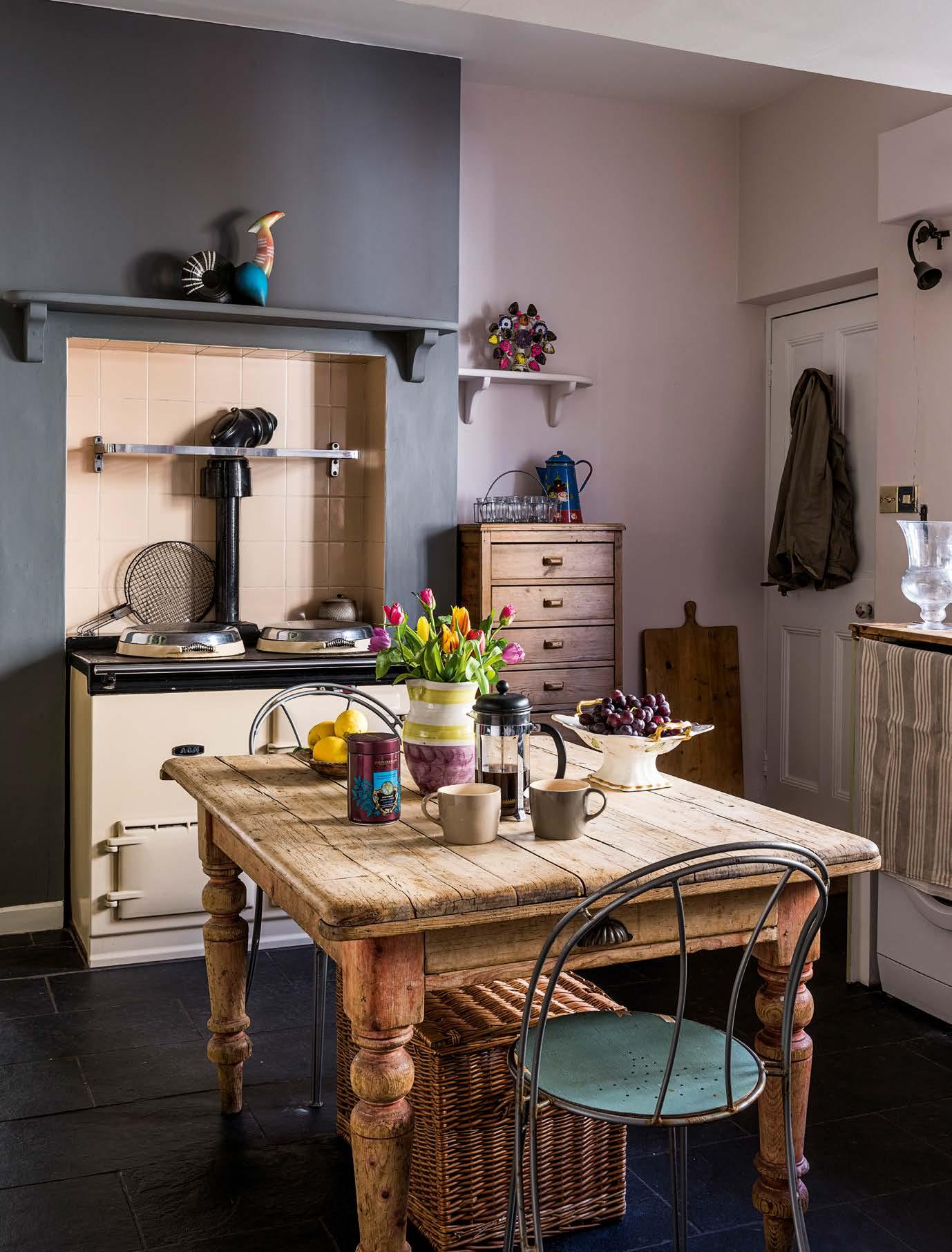
The shelves in the pantry are filled with china and serving dishes. The original bells summoning servants remain in situ.



summer. “Once the weather warms up, we turn off the Aga in the original kitchen and cook and eat in the new kitchen,” Lynn says. “The kitchen appliances in it are concealed in the cupboards so they don’t dominate the room. It makes a change and, if the weather allows, we can open the French windows and take everything outside to eat in the garden.”
A previous owner was the late garden designer Mark Rumary. “We try to keep up his good work by retaining his planting and his design scheme which divided the garden into a series of ‘rooms’,” Lynn explains. Time for the garden is limited, however, by her other occupation: “I’ve always loved decorative textiles and fine linen, and I’ve been collecting them for years, buying at auctions, antique fairs and from specialist dealers,” she says. “There’s something magical about holding a piece of Spitalfields silk.”
“After we moved to Suffolk, she continues, “I did a professional pattern-cutting course and began using fabrics from my hoard to make dresses. Each one is a one-off and I sell online as well as at The Country Brocante fairs around the southern half of England. Since the first lockdown, I’ve concentrated on making decorative items such as cushions, throws and lampshades. Everyone is spending so much more time at home rather than dressing up and going out, so
TOP The Georgian facade provides the perfect backdrop for the Madame Alfred Carrière climbing roses. ABOVE The couple’s whippet Lily sits with Lynn, who is wearing one of her own designs. To find out more, visit @lynn walforddbdlondon


In pride of place on the landing is a painting by Robert Anderson. It was commissioned in 1879 by John’s great-grandfather and was the only item John’s father managed to salvage after his own father went bankrupt during the Great Depression in 1929.

ABOVE LEFT Using three shades of Little Greene’s French Grey on the walls and ceiling gives the main bedroom added dimension and depth. On the bed is a 1920s French cotton quilt, and cushions made by Lynn using antique silks and trimmings. Bedside tables picked up in a junk shop have been painted in Dragon’s Blood by Fired Earth. The lampshades are from Su Mason. LEFT The wardrobe in the couple’s daughter’s bedroom has been painted by John in true Bloomsbury style to reflect her love for Charleston in Sussex. there is a demand for individual, handmade accessories which add interest to one’s surroundings.”
Lynn’s flair for design and decoration can be seen in her own home, where her skill with a needle and her resourceful approach is evident throughout. In the sitting room’s vibrant mix of pattern and colour, in the dining room, where a wonderful ‘tree of life’ wallpaper spans one wall, and upstairs, where finely worked antique and vintage textiles add interest and atmosphere to the bedrooms.
“Being resourceful was a necessity when I moved to London after leaving university,” Lynn says. “Nobody had any money, so we’d buy one crepe blouse and dye it a different colour every week. On Saturdays, we’d shop at Biba or Bus Stop. Once we were all dressed up, it was off to the clubs on the King’s Road. One of my first dresses was from Mary Quant’s shop on the King’s Road. Later on I had a couple of Ossie Clark’s beautiful dresses, and I loved the cut of the clothes from Mr Freedom. It was an exciting, innovative time.”
Initially, Lynn worked for a magazine where the art director, Stanley Glazer, taught her about photography, graphics and design. Later, she worked on films and commercials as a costume stylist. “I just
The bathroom walls are painted in Farrow & Ball’s Elephant’s Breath and the bath is painted in Dragon’s Blood by Fired Earth whilst the needlework panel was a gift from a friend. “Our whippet Lily is loved by all who meet her,” Lynn says.

had to think on my feet. Staying calm and coping, adapting, nipping in here, letting out there. Teaching someone to style is impossible – one either has ‘the eye’ or one hasn’t. It can be honed, of course, by studying the work of talented designers and makers. On the sewing side, I’m largely self-taught, but I’ve found that the more you do the more you learn.” Lynn’s innate sense of style – having the confidence to mix bold pattern with equally bold colour – is balanced by knowing when to stop. In the sitting room the plain yellow walls are a foil to the panoply of patterned cushions on the Ercol day bed and the purple velvet sofa. In the dining room, the timeless design of the wallpaper is contrasted by contemporary dining chairs. “I’m not a purist when it comes to combining designs of one era with those of another,” she says. “It’s all in the mix.” n

RIGHT In the guest bedroom, a reproduction oak wardrobe bought at auction has been fitted with shelves and painted with White Lead Deep on the exterior and Pale Wedgwood inside, both by Little Greene.










